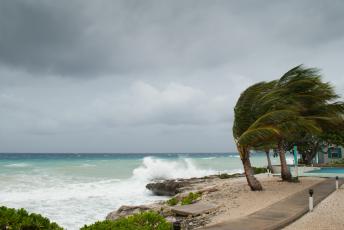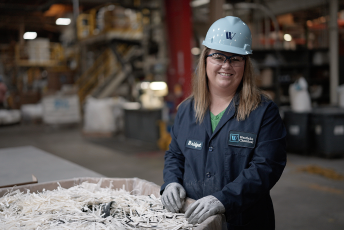This article originally appeared on Politico.com.
HOUSTON — The dog days of summer typically bring one or two hurricanes that lash the U.S. Gulf Coast. The punch of these storms, with their powerful winds and heavy rains, often has the potential to curb production at Gulf Coast refineries that together churn out nearly 50 percent of U.S. motor fuels and are crucial to our economy.
But smarter risk management in recent years has generated a notable outcome: shorter refinery outages and supply disruptions that normally occur during storms and can impact drivers as supplies of fuel slip and demand surges. Better planning and response efforts — from humanitarian relief and drone flights to greater coordination with the government — are helping refiners to restart production faster after storms than in years past. This is important as we are one month into what is shaping up to be an active hurricane season.
Take for example Hurricane Harvey, which dumped as much as 60 inches of water along the Gulf Coast and hit only days before Hurricane Irma struck Florida.
Crude oil processing in the Gulf Coast region fell 37 percent after Harvey-Irma hit last year, substantially less than declines of 51 percent after Gustav-Ike in 2008 and 56 percent after Katrina-Rita in 2005, according to federal data. So fewer refineries went offline because of Hurricane Harvey and those that did returned to normal output more quickly.
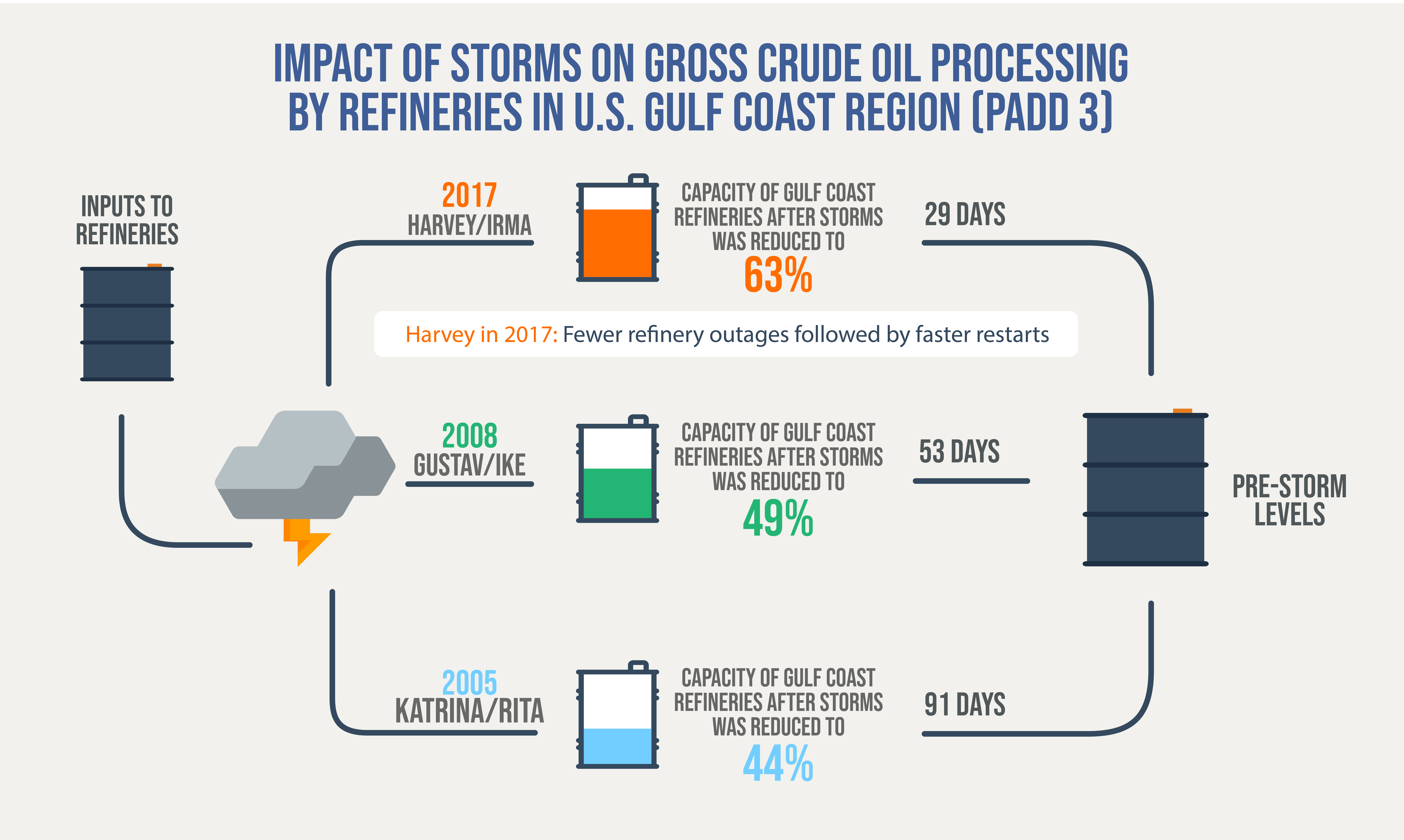
This matters for drivers. Storm-related fuel supply disruptions pushed U.S. gasoline prices higher by around 50 cents a gallon after the storms in 2005 and 2008 but by half that after Harvey-Irma, and prices settled more quickly after Harvey as well, according to an analysis of federal data that were adjusted for crude price changes to isolate fluctuations in fuel prices.
What’s making this progress possible? The people who run storm response efforts at refining companies say the answer is relatively simple: prioritizing relief efforts for workers to ensure that people with technical know-how are available to restart complex industrial facilities. Companies have deployed increasingly sophisticated logistics and communications systems to check on employees and give them help after storms — usually by providing food, financial aid and assistance to damaged homes. Risk management is as much about people as it is about machines and technology.
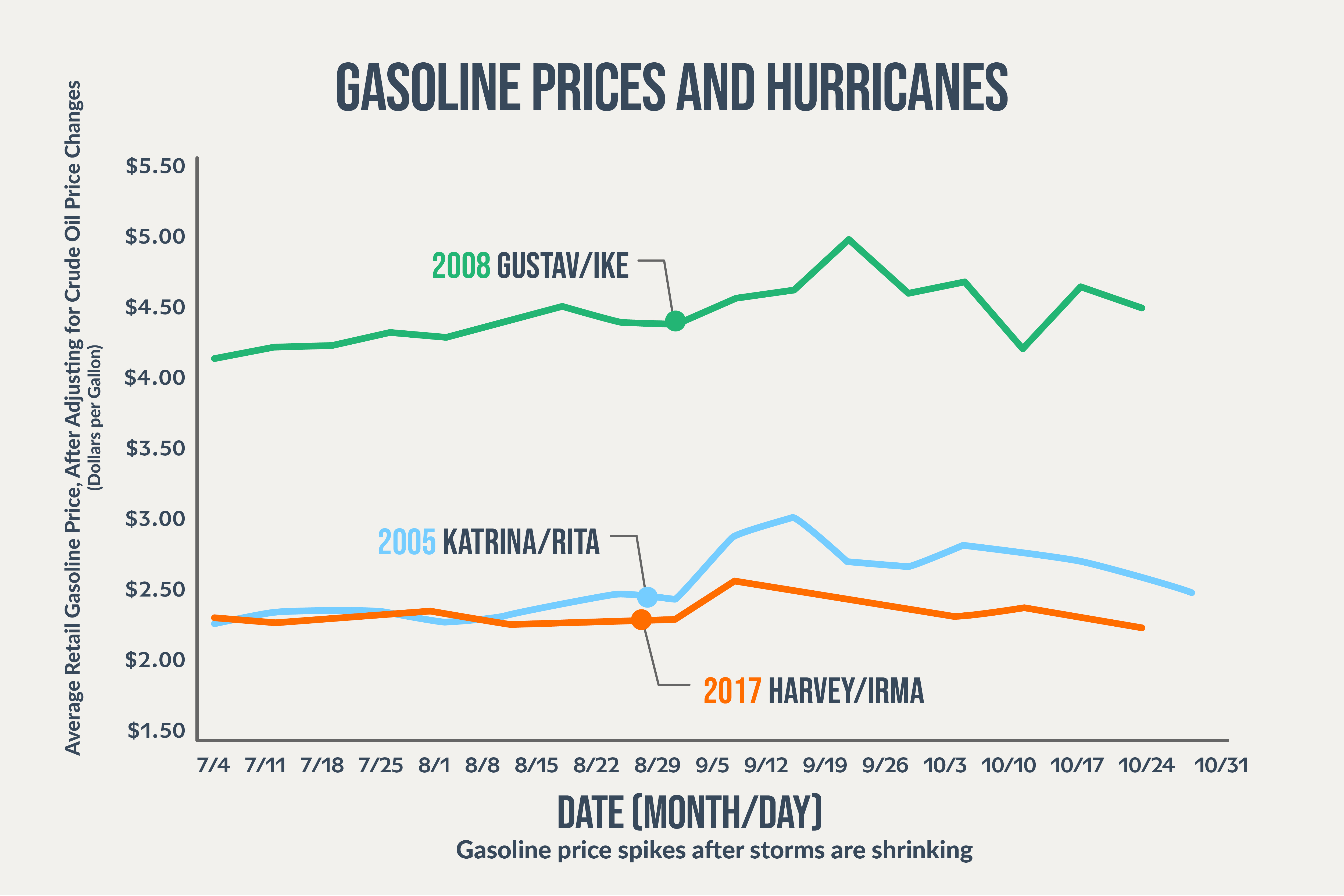
“We get our folks back on their feet, so they don’t have to worry about what’s going on at home. They can then help us focus on getting our plant back up and operating,” said George Shawver, director of health, safety and emergency preparedness at Valero, which operates seven refineries along the Gulf Coast.
Valero runs a call center for employees. It received more than 1,000 calls from employees during Harvey. Its Post Hurricane Assistance Teams, known as PHAT Boys, pull out carpet, wallboard and furniture from flooded homes to control mold growth and dry them out with fans — a crucial step in stabilizing homes and preventing rot before reconstruction. PHAT Boys, crews of volunteer employees, helped over 200 colleagues after Harvey.
Other refiners use a similar model, deploying teams to help families with the painstaking process of mucking out their homes.
“Teams with mold-control chemicals and shop vacs can do a tremendous amount of work in one day,” said Fritz Kin, manager of refining safety and security at Marathon Petroleum Corporation (MPC), which operates refineries in Texas and Louisiana. “But that is daunting if you are a husband and wife with a baby in the heat and no A/C.”

Members of Valero’s Post Hurricane Assistance Teams perform cleanup duties on a house in the aftermath of Hurricane Harvey. The PHAT Boys – crews of volunteer employees – helped more than 200 colleagues after Harvey.

As part of storm recovery efforts in affected communities, Valero provided fuel for use in generators and disaster recovery equipment.

Marathon employees helped their co-workers get back on their feet by repairing damaged homes after Hurricane Harvey.
Refiners set up barracks or rent out blocks of hotel rooms to provide temporary housing. They deploy fuel trucks fitted with special nozzles to fill up vehicles directly, so workers can get back and forth to work or emergency responders can keep moving to help community members.
They also stock warehouses with food, water, baby and pet supplies, and tools employees need for recovery work. MPC sent a convoy of 24 trucks from San Antonio toward its refinery near Houston just after Harvey passed.
Though refiners have been handling storms for decades, there are ongoing efforts around improving drainage on sites, using more mobile pumps, and raising electrical equipment so plants can maintain power even in times of flooding.
There is more sophisticated work being done with advanced technologies. The Federal Aviation Administration granted some refiners special waivers after Harvey to allow them to fly drones over the facilities to inspect them for restart. At the same time, refiners are taking a much closer look at real-time weather modeling even after storms make landfall.
MPC now contracts meteorologists to track storms minute by minute using the latest in weather prediction tools to see how much rain is expected to fall at its precise latitude and longitude. Rain amounts can affect decisions to throttle back, shut down or evacuate plants. During Harvey, despite heavy rain, MPC’s Galveston Bay refinery decided to keep running because meteorologists saw that it would not be hit by hurricane force winds.
“They kept running,” said MPC’s Kin. “That was good because we were able to keep supplying fuels to the area in a real time of need.”
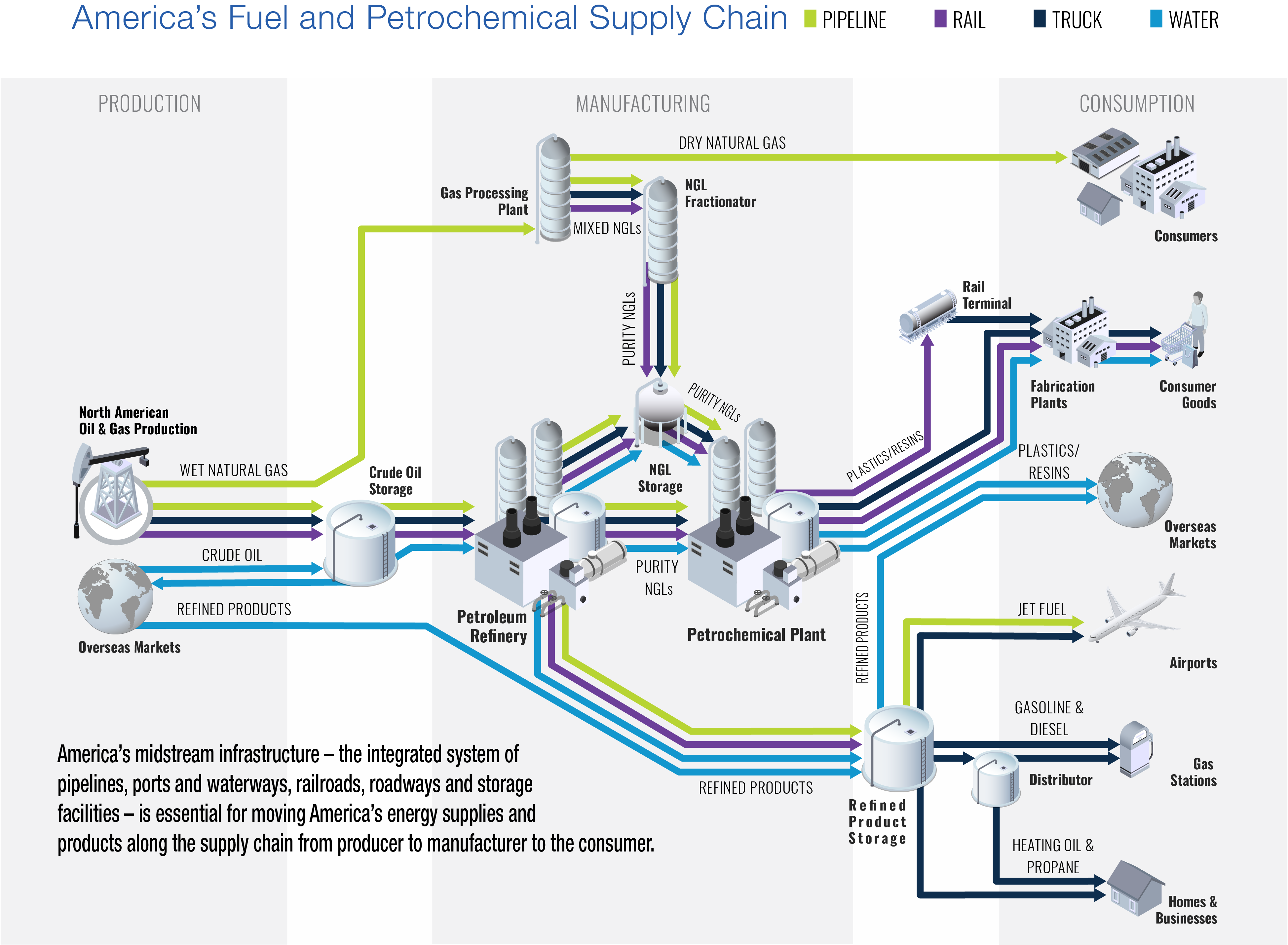
This hurricane season, for the first time, Shawver said Valero is introducing more precise real-time rainfall forecasts for each of its sites into its storm response protocols, part of an effort to make more accurate decisions about whether to keep plants — which help feed the nation’s fuel supply system — running or not.
Though refineries have long had close relationships with local fire departments and city governments, now there is much more coordination happening between trade groups, federal agencies and other stakeholders. Since Katrina-Rita in 2005, the federal government has become much more active facilitating collaboration across agencies and industrial sectors by providing a centralized clearinghouse for information.
Each year, the Department of Energy runs exercises to evaluate energy sector and government response to major energy supply disruptions, including hurricanes. A wide swath of the energy industry including refiners, natural gas suppliers, utilities and fuel distributors, as well as federal government agencies like the Department of Homeland Security, Department of Energy and United States Coast Guard, participate in these exercises. The goal is to improve communications and coordination that will support restoring critical infrastructure after storms.
This “bears so much fruit when a disaster strikes and time is of critical nature,” said Matthew Wombacher, director of the National Infrastructure Coordinating Center at the Department of Homeland Security.
Braving the Storm: When Disaster Meets Preparation
